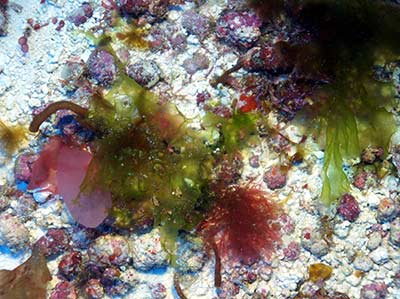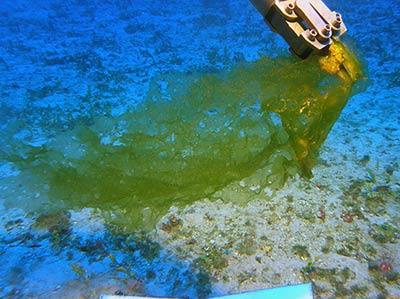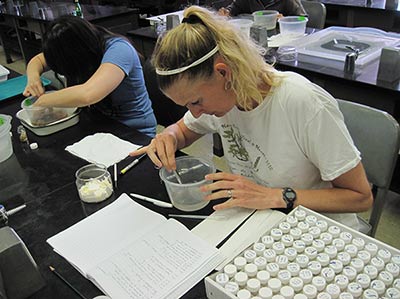New Algae Species Discovered in Hawaii's Deep Waters
Scientists have discovered four new species of deep-water algae from Hawaiʻi. Marine algae, or limu, are very important in Hawaiian culture, used in foods, ceremonies and as adornments in traditional hula. The new species of limu were collected between 200-400 feet, depths not typically known for marine algae.
The species were sampled during surveys between 2013 and 2015 in Papahānaumokuākea Marine National Monument by NOAA divers using advanced SCUBA diving technologies, and during past NOAA expeditions from 2006 to 2014 throughout the Main Hawaiian Islands using submersibles operated by the Hawaiʻi Undersea Research Laboratory.
Heather Spalding, Ph.D., a postdoctoral researcher at the University of Hawaiʻi Department of Botany, has been collaborating with NOAA's Office of National Marine Sanctuaries for several years studying samples collected by NOAA divers working in Papahānaumokuākea. She and her colleagues at the University of Hawaiʻi and University of Washington's Friday Harbor Laboratories conducted DNA analyses that showed that the species are very different than those found in Hawaii's shallow waters, even though they are very similar in appearance. The newly discovered species are similar in appearance to limu pālahalaha (Ulva lactuca), or sea lettuce.
Scientists consulted with the Native Hawaiian community to develop meaningful names for the new species to honor the great importance they have in Hawaiian culture. One species was named Ulva iliohaha, which refers to the foraging behavior of ʻīlioholoikauaua, the endangered Hawaiian monk seal, one of the best-known residents of Papahānaumokuākea.
Scientists anticipate that many additional new species of algae will be described in the coming years from samples collected by NOAA divers on future expeditions to the Monument.
The study describing the new species of limu was published in the latest issue of the Journal of Phycology. The article, titled “New Ulvaceae (Ulvophyceae, Chlorophyta) from mesophotic ecosystems across the Hawaiian Archipelago,” ,” is featured as the journal’s cover story and can be accessed in its entirety at http://onlinelibrary.wiley.com/doi/10.1111/jpy.12375/full.
Read the press release.
See more images.
Listen to the Hawaiian names.



